 | ||
| Tenerife | ||
| region | Canary Islands | |
|---|---|---|
| Residents | 904.713 (2018) | |
| height | 10 m | |
| no tourist info on Wikidata: | ||
| location | ||
| ||
Tenerife is the largest of the Canary Islands. It has an area of around 2,000 km² and around 900,000 inhabitants. The year-round mild climate particularly attracts tourists from England, Germany and Scandinavia to their beaches. Well-developed hiking trails and picturesque historic towns are attractive destinations. The island is also popular with holidaymakers from spanish Mainland, especially during Easter.
Regions
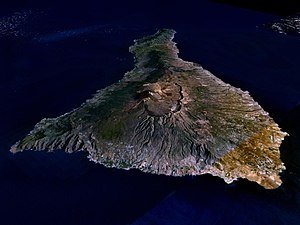
The island can be divided into three zones
Metropolitan area
It is located in the northeast of the island and is relatively densely populated. About half of the island's population lives in this area. It essentially includes the cities
- 2 San Cristobal de La Laguna (short La Laguna). Because of the historical cityscape it is part of the world cultural heritage.

- 3 Tegueste. The place is from the urban area of La Laguna enclosed and known for its wine.
The North

The north coast, like the metropolitan region, is influenced by the north-east trade wind with somewhat more volatile, spring-like weather. From east to west, here are the locations:
- 5 Taganana. Traditional town with a rich tradition in sugar cane and wine growing.
- 6 La Esperanza. Village in the municipality of El Rosario founded by Castilian settlers.
- 7 El Sauzal. City surrounded by hills and vineyards.
- 9 Puerto de la Cruz (short Puerto Cruz). City with many buildings in the colonial style and a huge, artificial bathing area. Tourist center with the Loro Parque and the botanical garden.
- 10 Icod de los Vinos. The city is home to the oldest and largest dragon tree in the world and the largest volcanic cave in Europe.
- 12 Buenavista del Norte. In the Teno Mountains with the small town Masca and the picturesque gorge.
The South

The Southwest coast is the most important tourist region. Here the sun shines more often and longer than in other parts of the island. The extensive bathing bays are protected by jetties and there are beautiful sandy beaches. From the southernmost point on Punta de la Rasca to the north are the places
- 13 Los Cristianos. Tourist center with a small port, from where, among other things, excursion boats to the Los Gigantes cliffs and the neighboring island La Gomera depart.
- 17 Santiago del Teide. The towns on the coast also belong to the municipality Puerto de Santiago, Playa de la Arena and Los Gigantes.

The Southeast coast has been badly damaged by the heavy deforestation in the past centuries. Nevertheless, this part of the country has its charms, as there are not so many package tourists to be found here. Here you can get to know the hinterland very nicely.
- 19 San Miguel de Abona
- 20 Granadilla de Abona. With the resort popular with surfers El Médano.
- 22 Candelaria. Marian pilgrimage site to which Canarian Catholics make pilgrimages.
Destinations worth seeing

- 1 El Teide National Park. Includes the highest mountain at 3,718 m Spain and the crater landscape Las Cañadas. Jacket, long trousers and possibly a hat should definitely be carried in hand luggage, as it is very fresh there even in midsummer and, above all, drafty.

- 2 Anaga mountains. Located in the northeast of the island, just a few kilometers from the vibrant capital. You dive into another world with dense laurel jungle, many spectacular viewpoints, green meadows and a landscape reminiscent of North America or the Alps, in which in a few places people still live in caves like in the time of the Guanches.
- 3 Cumbre dorsal. On the ridge from the north-eastern tip of the island to the Teide, you cross almost all vegetation zones on earth. Numerous viewpoints allow breathtaking views over the island and distant views of the other islands of the Canary Islands.
- 4 Teno Mountains. Located in the northwest with its lush vegetation, bizarre rock gorges and the picturesque mountain village Masca. A hike through this gorge (one way: approx. 4.5 km and a good 600 meters in altitude) is highly recommended (the hiking trail has been closed for repairs since 2018). You can make the way back on the water and e.g. take the bus back to Masca if the car is there - but that has to be planned in advance. On a boat trip to the port past Los Gigantes you can come across one or the other dolphin.
- 5 Puerto de Santiago. The picturesque bay with the pitch black beach is only a few kilometers north of the impressive cliffs of Los Gigantes.
.jpg/300px-Tenerife_-_El_Medano_(Florian).jpg)
- 1 El Médano. The place popular with surfers is located directly on the rocky nature park Montana Roja.
- 2 Las Teresitas. The palm beach, reminiscent of Copacabana, is located in San Andrés north of the capital Santa Cruz.
background
history
The first inhabitants of the Canaries were the Guanches. This people, probably descended from the Berbers, had a strictly hierarchical form of rule, at the head of which was a Mencey or king prevailed. At the time of the first contact with the Spaniards this was the mencey Tinerfe, from which the name of the island of Tenerife is derived and after which the islanders still call it Tinerfeños are designated.
After the first attempts at proselytizing the islands were violently subjugated, after the victory of the Spaniards at La Laguna in 1496 the Guanche culture was almost completely destroyed. The Canaries became immensely important for the Spaniards as a stopover for their ships on the way to America, and other seafarers also recognized the strategic importance of these islands. The English admiral Nelson tried in vain to conquer Tenerife in 1797.
Tenerife experienced a heyday during the Enlightenment. Important personalities such as Alexander von Humboldt visited the island. Nevertheless, Tenerife could not break away from the prevailing feudal social order, so that reforms only came about in the 19th century.
The early years of the 20th century were marked by progressive radicalization. In 1936 General Franco launched his coup from Tenerife. The Spanish Civil War did not reach Tenerife, but the economic isolation under the dictatorship had a very negative effect. The only export good were bananas for the mainland. After democratization from 1975 onwards, Tenerife and all the other islands in the archipelago were given autonomy and tourism became more and more important.
Incidentally, 350 tourists visited for the first time in 1885 England the island. Six years later there were 5,000 guests a year, and in 2001 there were 4.8 million.
Flora and fauna
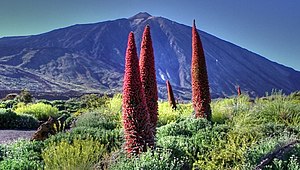
Many of the plant species growing on Tenerife are endemic, i.e. they are only distributed locally. This includes the Canary pine, the most important conifer of the Canaries, the needles of which are about 30 cm long. That is also known Teide Adderheadwho is only in Teide National Park occurs. Also the Canarian dragon tree, the best-known example of which is in Icod de los Vinos is one of them, as well as numerous cactus-like milkweed plants in the southwest of the island.
However, numerous plants were also introduced and are naturally part of the island's vegetation today. Well known is the Canarian banana, today one of the main export items. It was settled from Southeast Asia, as was the sugar cane, of which remnants that are still overgrown today found their home in the Barrancos. Both types of plants were successfully exported to America, but other plants came from the New World. The opuntia have spread particularly successfully on the barren volcanic areas, originally they were cultivated as a host plant for the cochineal scale insect to obtain colorants. The small potatoes are also typical of the islands Papas which are harvested several times a year and as Papas con mojo to be eaten.
The botanical garden of Puerto de la Cruz was an attempt to settle strange plants from all over the world in order to later spread them to Europe.
environmental Protection

The island's most important industry, tourism, has already contributed to widespread damage to Tenerife's environment. In particular, the excessive development, the removal of rubbish and the fresh water supply for the masses of people have a negative effect on the flora and fauna. The "Ley de Espacios naturales de Canarias" ("Law on the Declaration of Canarian Nature Reserves"), enacted in 1987, provides that ecological crimes are punished more severely and fewer building permits should be issued. In the end, the law had little effect because it could not be implemented. A trend reversal took place in the consciousness of the island's population: information measures and campaigns by environmental protection organizations such as the “Coordinadora Ecologista de Tenerife” are bearing the first fruits, the membership of these associations is growing steadily. Another step in the preservation of nature is the creation of access restrictions for national parks.
A discussion is currently emerging as to the extent to which the Teide National Park should still be made accessible to hikers and nature lovers. More than 2.5 million explorers visit the park annually. 400,000 of them alone use the Teleferico cable car to get to the summit area. In order to protect the area more, the Teide Park was enlarged some time ago from 13,571 to 19,522 hectares (fifth place in relation to the extent of Spanish national parks) by adding the Cañadas to new regions. Since the regions around the Teide benefit the least from tourism, but have to bear the greatest damage, they were assigned more influence. It is now being discussed whether the park should be paid for, cars shouldn't be allowed behind the Cañadas and instead buses should let tourists chauffeured through the volcanic landscape.
So far it cannot be foreseen whether or when these plans will be implemented in the (near) future.
language
On the island will Spanish spoken. You can come along in the tourist centers English and German everywhere, there are restaurants where the menu is written in 10 different European languages.
getting there
Tenerife has two airports:
- 1 Tenerife South Airport (Aeropuerto Reina Sofia, IATA: TFS). Most of the holiday airlines fly to the airport in the south of the island.
mobility
The cheapest means of transport are the green, mostly air-conditioned buses of the Transportes Interurbanos de Tenerife S.A.U. (short TITSA), usually here in the Canaries Guagua called. They drive to every village on the island and are very cheap, especially with the practical "Bono-Bus" parking cards, but the journeys through small towns are usually quite long due to the numerous stops in between. However, there are direct buses (approx. 50 minutes) between Playa de las Américas and Santa Cruz. For the very comfortable, there are also organized excursions to interesting tourist destinations. B. from Viajes Teide
For shorter distances, you can also get around the area quite cheaply by taxi.
All major and many local car rental companies are represented on Tenerife. The road network is in good condition, can be very narrow and winding in the mountains (road to Masca in the Teno Mountains). Petrol is cheaper than in Germany (January 2013: approx. € 1.08 / l). When taking over you should check the condition of the vehicle and tires.
Theme and amusement parks pick their visitors up from the tourist centers free of charge, the shuttle buses often only run on certain days of the week.
activities
In addition to the scenic beauty and diversity, the island offers an excellent variety of activities. in the winter you can drive up to Teide and have a snowball fight, then return to the south of the island and sunbathe on the beach or swim in the sea - all within two hours. There are some wonderful round trip routes with breathtaking scenery. Also, there are some very good theme parks like that Loro Parque at Puerto de la Cruz available.
Mountain bikes and e-bikes are highly recommended - provided you are fit for the mountain (otherwise it is a good idea to bring a cheap folding bike) - and are taken by the airlines for € 20 to € 30 each way - if you reserve in advance. Almost lossless private sale of an inexpensive used vehicle (preferably to long-term tourists) is also possible with a little talent. On many buses you can transport the wheels in the overhead locker free of charge - they should be relatively robust and you shouldn't be bothered by increased scratches. The locals usually go on excursions this way with their downhill bikes on weekends.
Hiking, climbing, diving, mountain biking - offers of organized tours are available in most hotels.
Hiking areas and routes
- Anaga Mountains in the northeast
- Teno Mountains in the northwest
- and of course the mountains around Las Cañadas with the Teide ascent
kitchen

The local cuisine can be described as hearty and extremely tasty. Typical are the potatoes cooked in brine (papas arrugadas), which are served with the sauces called mojo verde and mojo picon, as well as garbanzos (chickpea stew), etc. where the local workers' cars are parked, not the tourist buses. You will be amazed at what you are served!
In the tourist centers, the cuisine is very much geared towards the interests of the tourists. But here, too, there are oases in which Canarian cuisine is offered. You can eat very nice in the restaurants tapas to get. But if you want to enjoy real Canarian cuisine, then you have to go to the small villages that have not yet been flooded by tourists. Communication is often very difficult, but the food becomes a reward.
Gofio
Gofio was the staple food of the Canarian population before the introduction of the potato. It is still popular with residents of the islands today. Gofio is a flour made from roasted grains or pulses. Wheat, corn, garbanzos (chickpeas) etc. are roasted in the gofio mills and then ground into flour. Often different basic products are processed into flour together between the stones. The flour is then either kneaded into a mass with honey, raisins and / or ground almonds or eaten together with a meat or vegetable broth. In Tenerife, the sweet version of Gofio is sliced or the strong version of Goffio as a starter, e.g. with conejo en Ajo (rabbit in garlic sauce) or cabra (goat) are served. Today there are several electrically operated gofio mills that you can visit and where you can buy different types and mixtures of gofio in smaller quantities. z. B. in La Orotava approx. 100 meters above the house of the balconies directly above the Parque San Francisco or 100 meters below the house of the balconies (La Maquina) directly in front of the Casa Lercaro.In German cuisine, Gofio is suitable for thickening sauces, which get a slightly stronger taste as a result.
nightlife
Tenerife is never closed, that is to say, there is always something going on somewhere. There are numerous bars that are open around the clock. There are discos that are open until the morning and where there is always something going on. There is something for everyone. But that's all made for tourists. If you want to celebrate with the locals, you have to resort to the small villages in the interior of the island. Here you are received in a very hospitable manner and are part of every small fiesta.
public holidays

The holiday calendar is redefined every year by the different autonomous regions of Spain. For example, if a public holiday falls on a Sunday, in some cases the following Monday or the preceding Friday is also designated as a public holiday, here the public holidays that apply to the entire island.
- January 1st: Año Nuevo
- 6th January: Three Wise Men, Los Reyes: On this day the children in Spain get their Christmas presents that the Three Wise Men bring with them.
- February March: Carnaval.
- 19th March: San José
- Maundy Thursday: Jueves Santo
- Good Friday: Viernes Santo
- Easter Sunday: Pascua
- 1st of May: Día del Trabajo
- 30th May: Día de las Islas Canarias, Canary Islands Day
- Pentecost Sunday: Pentecostés

- Corpus Christi: Corpus Christí
- Ascension of Christ: Ascensíon del Señor
- July 25th: Santiago Apóstel, Apostle James
- 15th of August: Assumption of Mary: Asunción
- 12th of October: American Discovery Day, Día de la Hispanidad
- 1st of November: All Saints' Day, Todos los Santos
- 6th of December: Día de la Constitución, Constitution Day
- December 8th: Maria Conception, Immaculada Concepción
- 25 December: Christmas, Navidad
In addition to the normal public holidays, the municipalities can declare two further days of their choice to be local holidays, one of which is usually dedicated to the patron saint of the place. This explains the many local celebrations on the islands.
security
Armed crime is hardly a problem in Tenerife. However, you should be careful of pickpockets in metropolitan areas, and you should not leave valuables lying around. The purchase of a supposedly cheap holiday home on Tenerife by dubious dealers should also be avoided.
It is recommended not to leave anything in the car and also to leave the glove compartment open to signal to possible thieves that any break-ins are not worthwhile.
Beware of pickpockets on the beach.
There is now also gang crime on Tenerife, which was imported from mainland Europe. Renting the hotel safe is definitely important. Do not leave any valuables lying open in the room, as most hotels are freely accessible to everyone and the hotel room doors are not effective protection. The emergency number is 112.
The Policia Local shows a very strong presence, and the Guardia Civil patrols, especially at the hot spots where there are many tourists. Although this suggests protection, it is only effective in very few cases. In addition, many police officers have hardly any knowledge of foreign languages. If you need the police because of a complaint, you should go to the local police station. There is also a police hotline (Mon-Sun 9 am-3pm)[1]which is manned by interpreters. Here you can even place your ad over the phone.
climate
Island climate in general

There is no uniform climate in Tenerife. The location of the island in the Atlantic and the height of its mountains are responsible for the fact that different weather conditions prevail even in a relatively small area. Like all other islands of the Canary Islands, Tenerife has mild temperatures all year round. On the one hand, the temperature of the surrounding sea is responsible for this. At these latitudes, the water of the Atlantic has a temperature that fluctuates between 18 ° C in February / March and 23 ° C in August / September, making it possible to bathe in the sea all year round. On the other hand, there are the trade winds. These winds have their origin in the Azores high, which is over in winter Madeira is located, but further north to the in summer Azores wanders. Then the trade winds have enough space to soak up Atlantic water as far as Tenerife. While they are kept away from the island at night, they move as far as the Teidemassiv during the day. Clouds form at a height of around 1,000 to 1,500 m, which condense into a fine drizzle when they come into contact with the laurel and pine forests there. This fact brings decisive advantages to agriculture on the north side of the island in the otherwise extremely dry summer months. But it is also responsible for the fact that the southwest of the island has a warmer and drier climate than the northeast.
Climate in the northeast of the island
The climate table of the Aeropuerto Tenerife Norte
| Aeropuerto Tenerife Norte | Jan | Feb | March | Apr | May | Jun | Jul | Aug | Sep | Oct | Nov | Dec | ||
|---|---|---|---|---|---|---|---|---|---|---|---|---|---|---|
| Mean highest air temperature in ° C | 15.5 | 16.4 | 17.4 | 18.0 | 19.4 | 21.5 | 24.4 | 25.4 | 24.5 | 22.1 | 19.3 | 16.7 | O | 20.1 |
| Mean lowest air temperature in ° C | 10.1 | 10.1 | 10.5 | 10.7 | 11.9 | 13.7 | 15.6 | 16.4 | 16.4 | 15.0 | 13.2 | 11.3 | O | 12.9 |
| Cloudless days in the month | 3 | 4 | 4 | 3 | 3 | 3 | 6 | 6 | 5 | 3 | 4 | 3 | O | 3.9 |
| Precipitation in mm | 98 | 69 | 65 | 54 | 22 | 12 | 6 | 5 | 20 | 48 | 70 | 87 | Σ | 556 |
| Rainy days in the month | 8 | 7 | 8 | 6 | 4 | 3 | 1 | 1 | 3 | 7 | 8 | 9 | Σ | 65 |
| Relative humidity in% | 65 | 65 | 62 | 62 | 60 | 60 | 57 | 60 | 64 | 66 | 66 | 67 | O | 62.8 |
| Length of sunshine per month | 152 | 169 | 183 | 198 | 232 | 237 | 265 | 272 | 220 | 197 | 168 | 153 | Σ | 2446 |
Aeropuerto Tenerife Norte Airport (TFN) is about 600 meters from the city La Laguna. In the lower cities Puerto de la Cruz and Santa Cruz the average temperatures are slightly higher, the precipitation is sometimes significantly lower.
The trade wind now comes from the northeast and pushes the clouds against the mountains, especially of the Teide massif. Here you can differentiate between the areas
- below the cloud, these are in particular the large cities of Santa Cruz, La Laguna and Puerto Cruz and their surroundings with a year-round subtropical climate.
- in the cloud, these are the regions around 1000 m - 1500 m altitude. This includes the Anaga Mountains in the extreme northeast of the island, the elongated mountain ridge Cumbre dorsalthat stretches from La Laguna towards Mount Teide and large parts of the Corona Forestal, this is a forest area around the Teide that is mainly overgrown with pines. Most of the rainfall on the island falls here.
- above the cloud, this is mainly the Teide massif. The relatively dry air allows strong temperature fluctuations, at an altitude of over 2000 m it can certainly snow in the winter months.
Climate in the southwest of the island
For clarification, the climate table of the Tenerife South Airport:
| Tenerife South Airport | Jan | Feb | March | Apr | May | Jun | Jul | Aug | Sep | Oct | Nov | Dec | ||
|---|---|---|---|---|---|---|---|---|---|---|---|---|---|---|
| Mean highest air temperature in ° C | 21.6 | 22.0 | 23.1 | 22.9 | 23.7 | 25.3 | 27.5 | 28.4 | 27.9 | 26.5 | 24.7 | 22.7 | O | 24.7 |
| Mean lowest air temperature in ° C | 15.2 | 15.2 | 15.7 | 16.0 | 17.0 | 18.7 | 20.1 | 21.0 | 20.9 | 19.9 | 18.2 | 16.4 | O | 17.9 |
| Cloudless days in the month | 9 | 10 | 9 | 7 | 6 | 9 | 19 | 17 | 10 | 7 | 7 | 7 | O | 9.8 |
| Precipitation in mm | 11 | 14 | 18 | 7 | 1 | 0 | 0 | 0 | 3 | 9 | 27 | 23 | Σ | 113 |
| Rainy days in the month | 2 | 2 | 2 | 1 | 0 | 0 | 0 | 0 | 1 | 1 | 2 | 3 | Σ | 14 |
| Relative humidity in% | 64 | 66 | 64 | 66 | 69 | 70 | 68 | 68 | 70 | 69 | 67 | 67 | O | 67.3 |
| Length of sunshine per month | 195 | 201 | 218 | 215 | 241 | 249 | 287 | 268 | 203 | 209 | 197 | 199 | Σ | 2682 |
On the south side there is a constant summer with little or no wind and excellent bathing weather. Most tourists are drawn to the south side because of this. The north side is a little more humid and gives more of a year-round Spanish spring. The weather here is less constant, but mostly very pleasant.
literature
- : Tenerife DuMont Travel Paperback. DuMont travel publisher, 2013 (3rd edition), ISBN 9783770172528 ; 288 pages.
- : Tenerife, The most beautiful coastal and mountain hikes. Bergverlag Rother, 2010 (8th edition), ISBN 978-3-7633-4016-3 ; 223 pages (German). Price 12.90 € [D]
- : Alexander von Humboldt. His week in Tenerife 1799. His life, his work. Zech publishing house, 2009, ISBN 978-84-934857-6-4 , P. 208. with parts from the historical travel report; Price: € 22.90 / Tax-free on the Canary Islands: € 12.80
- Michael Szönyi: Geoland Tenerife, vdf Hochschulverlag, Zurich 2009, ISBN 978-3-7281-3242-0 .
- Compass hiking, bike, leisure and road map Tenerife, ISBN 978-3-85491-038-1 , Scale: 1: 50,000, price: 8.95 euros (as of 04-2007).
- Tenerife car and leisure map scale 1: 50,000. freytag & berndt, 2009, ISBN 978-3-7079-1061-2 . Price € 7.95
- : Tenerife. Dumont travel publisher, 2003 (4th edition), ISBN 3-7701-3726-4 ; 318 pages (German).
- : Meridian Zero. indepently published, 2017, ISBN 978-1-5212-2861-6 ; 312 pages (German). The Canary Islands beyond mass tourism, travel report with lots of background information also about Tenerife
- : Tenerife. Metzner publishing house, 2019 (2nd edition), ISBN 978-1790936762 ; 83 pages (German). Playa San Juan and the southwest of Tenerife


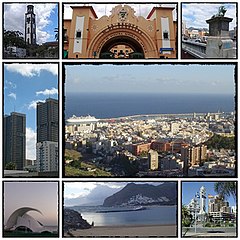
.jpg/350px-Blick_auf_San_Cristóbal_de_La_Laguna_aus_der_Aussichtsplattform_Mirador_De_San_Roque_auf_Teneriffa,_Spanien_(48225362971).jpg)




.jpg/320px-El_Sauzal_(Tenerife).jpg)

.jpg/350px-38400_Puerto_de_la_Cruz,_Santa_Cruz_de_Tenerife,_Spain_-_panoramio_(194).jpg)



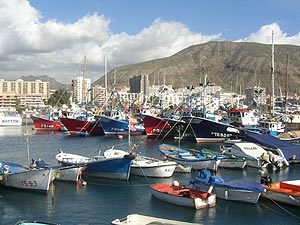
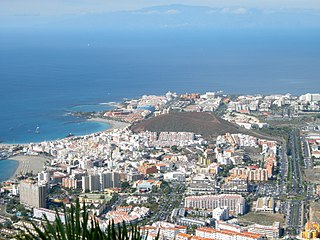








.jpg/350px-Roque_Cinchado_und_Teide_(Zuschnitt).jpg)


.jpg/321px-Puerto_de_Santiago_(2).jpg)



